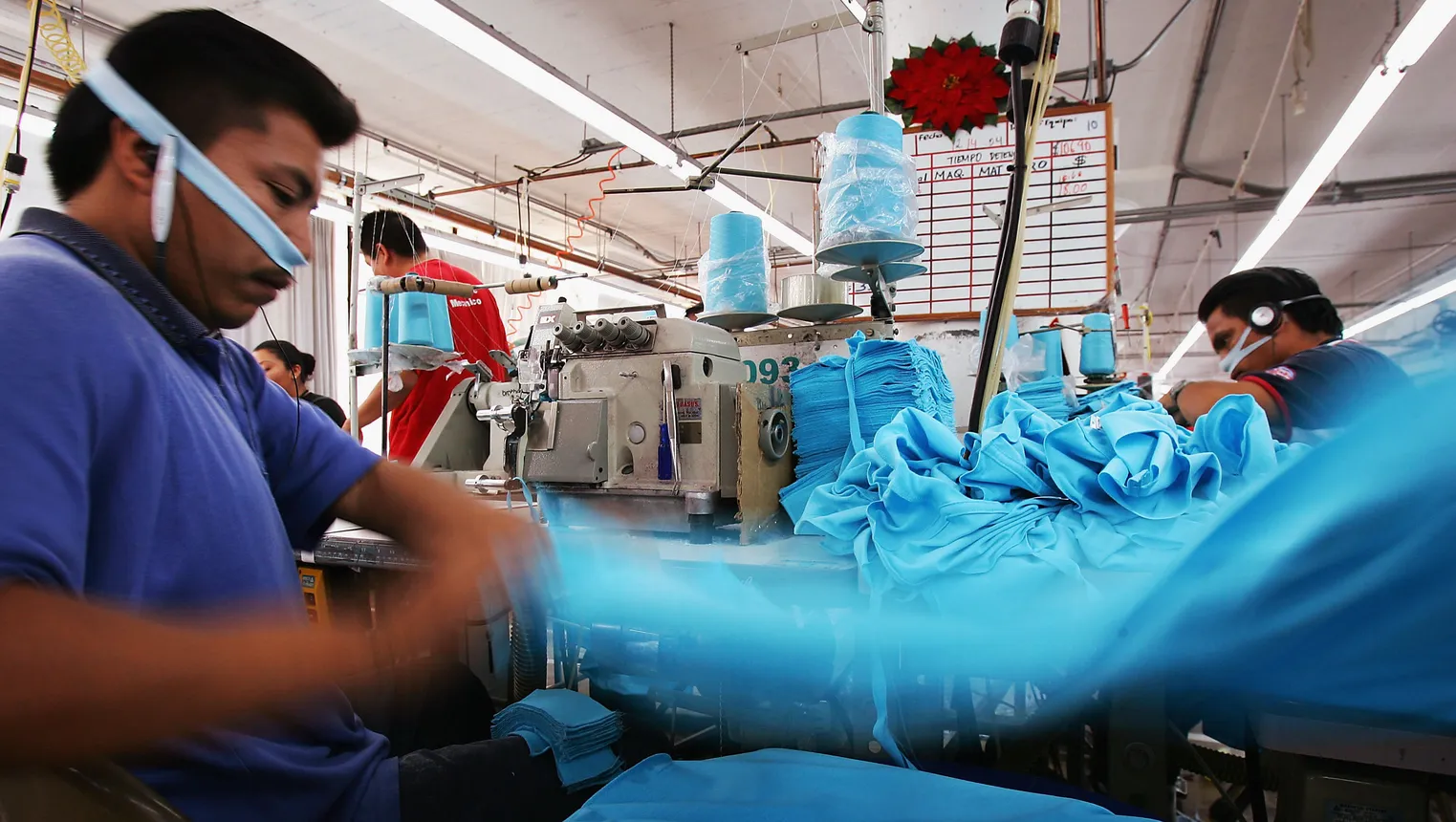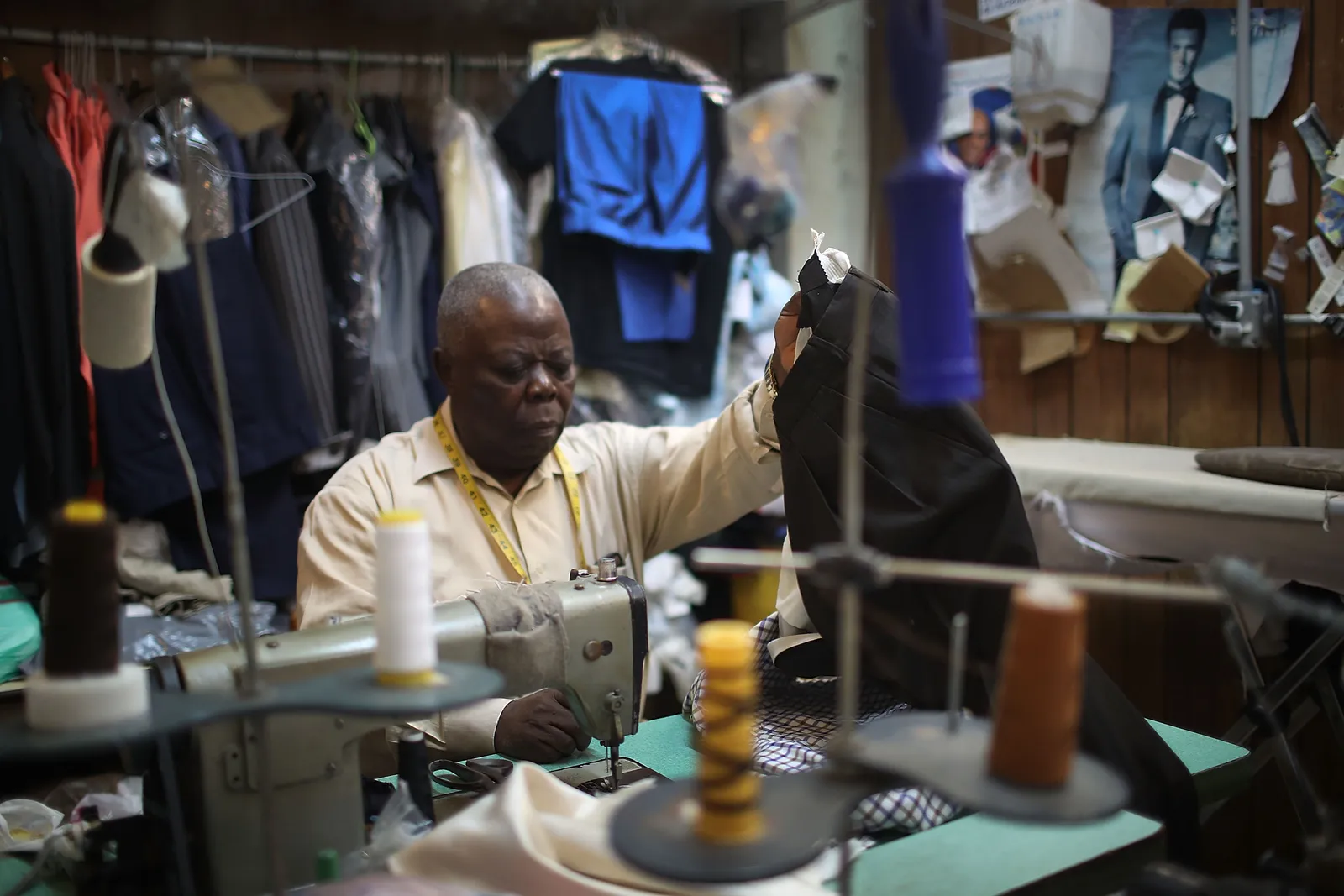When Houman Salem, founder and CEO of Argyle Haus of Apparel, puts in a fabric order, his Los Angeles-based supplier requests the order by fax — a machine Salem said Argyle Haus doesn’t have. To accommodate this, Salem said his team has to jump through hoops to print, scan and send the order.
“We’re talking about a very old and low-tech industry,” Salem said. “It’s not something the younger generation is gravitating towards. It’s not as fun and cool as tech.”
Apparel manufacturing facilities are often family-run companies but younger generations aren’t interested in taking over the business, according to Salem, and the current owners are resistant to change.
“They’re getting ready to retire and it doesn’t make sense to overhaul their entire system, so instead they just keep things running the way they are,” he said.
The lack of successors for these businesses has its repercussions. Eventually, Salem said, these facilities will close shop and a few power players will remain, forcing brands to look overseas to manufacture goods.
Salem said at one point California housed approximately 9,000 apparel factories. Now it’s down to about 2,000 and is continuing to dwindle.

Built-in manufacturing costs impede tech investments
Cost is another hurdle to tech adoption. Manufacturing costs on average in the United States are higher than overseas, according to Salem, particularly in its largest manufacturing hubs like California and New York.
The fashion and garment industry in Los Angeles, including textile mills, cut and sew facilities, wholesalers and distributors, is a $15 billion per year industry, according to the California Fashion Association. Los Angeles also has the largest cut and sew apparel hub in the country, according to L.A.-based Garment Worker Center. More than 45,000 garment makers work in the city’s garment-manufacturing sector and sew clothes for some of the country’s largest brands, including T.J. Maxx, Revolve, Ross and Fashion Nova, the report found.
However, the state’s garment and manufacturing facilities' biggest cost drivers are wages, insurance and taxes, according to Salem. “For example, I have to pay the highest workers compensation rate for my manufacturing employees,” he said. “For every $100 of wages, we have to pay $18 in workers compensation.” Meanwhile the national average in 2023 is 93 cents per $100, according to insurance company The Hartford.
The multitude of regulations and inspections on manufacturing facilities in California, particularly related to gig workers as highlighted in the state’s AB5 law, makes staying compliant difficult compared to other states with looser restrictions and leads to heavy fines as well, said Salem. The fines, which range from thousands to millions of dollars, reduce companies’ ability to invest in technology and automation, Salem explained.
But for manufacturing companies, operating facilities in these hubs are vital because that’s where the labor force is.
These excess costs are then offset to brands, which as a result turn to offshore factories with lower human labor costs and fewer regulations, but more manual systems and processes, said Salem. According to a 2020 report published at the University of Delaware, the United States offers one of the highest minimum wages for garment workers at about $1,160 per month. In comparison, Indonesia’s garment workers were making a minimum wage of $181 per month.
“The things that hold companies back may be lack of skills or lack of funding,” said Inna Kuznetsova, CEO of ToolsGroup, a supply chain planning and optimizing firm. “They often get caught in a chicken and egg situation where you need to invest in technology to reduce the spending on inventory, but spending on inventory is so high that you can’t spend on technology.”
This is also true of companies looking to bring work back into the U.S. “If brands are going to invest in reshoring their manufacturing process, they’re going to invest in modernized warehouses and manufacturers,” said Matt Jackson, vice president of digital innovation services at Insight.
Targeting the supply chain
Even with high costs, clothing manufacturers in the U.S. were forced to invest more heavily in technology over the last three years because the COVID-19 pandemic exposed issues with demand management and supply chains, said Jackson.
According to Kuznetsova, the pandemic threw off retailers’ monthly inventory predictions, especially as lead times for shipments from Asia began taking eight months or longer compared to four to six months prior to the pandemic.
“Leading up to the pandemic everything was about cost control and driving the absolute lowest cost and getting the cheapest supply chain possible,” said Jackson. The supply chain was relatively stable and retailers could use basic tools or Excel to manage inventory, Kuznetsova said. The technology, however, provided little help in optimizing how much of what item they needed.
Now Jackson sees most technology investments going toward AI and data analytics to address some of these issues by boosting efficiency, which increases profitability and improves sustainability. This is because it doesn’t replace a core part of the brand’s business but still allows them to respond more quickly to customer demands and trends, Jackson said.
“We’ve seen new investment in modeling around demand,” said Jackson. “Understanding when they are going to see spikes in demand, what’s happening in the market, what are the trends and what are other fashion companies seeing.”
Brands such as Abercrombie & Fitch, one of Jackson’s clients, have been allocating funds for AI and data analytics to get products to customers more quickly and fulfill demand.
“The things that hold companies back may be lack of skills or lack of funding. They often get caught in a chicken and egg situation where you need to invest in technology to reduce the spending on inventory, but spending on inventory is so high that you can’t spend on technology.”

Inna Kuznetsova
CEO of ToolsGroup
Another aspect of the supply chain process that has seen the most innovation is placing orders in showrooms, according to Whitney Cathcart, co-founder of AI mobile body scanning solution 3DLook and formerly a consultant focused on automated processes and digital innovation.
Previously, retailers would come into the showroom and fill out a physical order form, but now there are systems like NuOrder and Joor that have digitized this process and are widely used. NuOrder’s cost starts at $600 per month, its website states, and Joor’s costs range from $5,000 to $20,000 per year, according to Inc.
“If anyone is still doing it by hand, it is by choice,” said Cathcart. “Some people are like, ‘I’ve been doing this for 30 to 40 years so I’m going to continue doing it this way.’”

Apparel development innovation falls short
Another aspect of the manufacturing process that is still very manual is apparel development, which, unlike some aspects of managing the supply chain, is very expensive to automate.
Apparel development has three stages: pattern making, cutting and sewing. The industry has made great strides in automating cutting and using software to develop patterns, said Salem.
While cutting technology is available, the automated machine isn’t widely used due to its high cost, which Salem said is upwards of $500,000. The machine doesn’t completely eliminate human labor either. A worker must place the fabric in the machine, which rolls it out and cuts, and someone has to come pick up the stack and deliver it to the sewers.
On the other hand, the sewing process is almost impossible to automate and most manufacturers still use conventional methods like hand stitching or sewing machines. The cut and sew process is one of the top expenses in apparel manufacturing due to its reliance on manual human labor, representing about 35% to 40% of the total cost.
It’s easy to use robotics to manufacture goods for cars or planes due to their rigid structure, but clothing, not so much, said Cathcart. Fabric is malleable and creating clothing requires layering fabrics of different weights and stretches. “To think you’re going to automate that whole thing is incredibly complex,” she said.
That’s not to say there haven’t been attempts at finding a solution. Sewbo, which launched in 2016, is a machine that chemically stiffens fabrics to allow robots to sew garments. The chemical used is polyvinyl alcohol, a polymer that is already in widespread use for textile production, according to its website.
Jon Zornow, founder of Sewbo, told Fashion Dive in an email that it is developing its technology with a team of industry partners including Saitex, which is one of companies Levi’s uses for denim production; Bluewater Defense, a manufacturer of uniforms for the U.S. Department of Defense; and Industry Sewing and Innovation Center. However, its tools are still in development and evaluation, and are not currently used in production.
Softwear Automation has found a way to automate the sewing process as well, but exclusively for T-shirts. The company created a robotic system called Sewbots Workline, which uses cameras to map the fabric while robots steer through sewing needles. In 2017, Softwear was tapped by Adidas to create 800,000 tees per day — a volume that wouldn’t be possible with manual human labor.
“The fashion industry, in general, from how we concept, to how we create, to how we sell, has been a very slow sector to innovate,” said Cathcart.
But these emerging technologies show that change is afoot. “There has been a lot of innovation and forward movement, and it’s picking up pace because consumers have so much power,” said Cathcart.





















